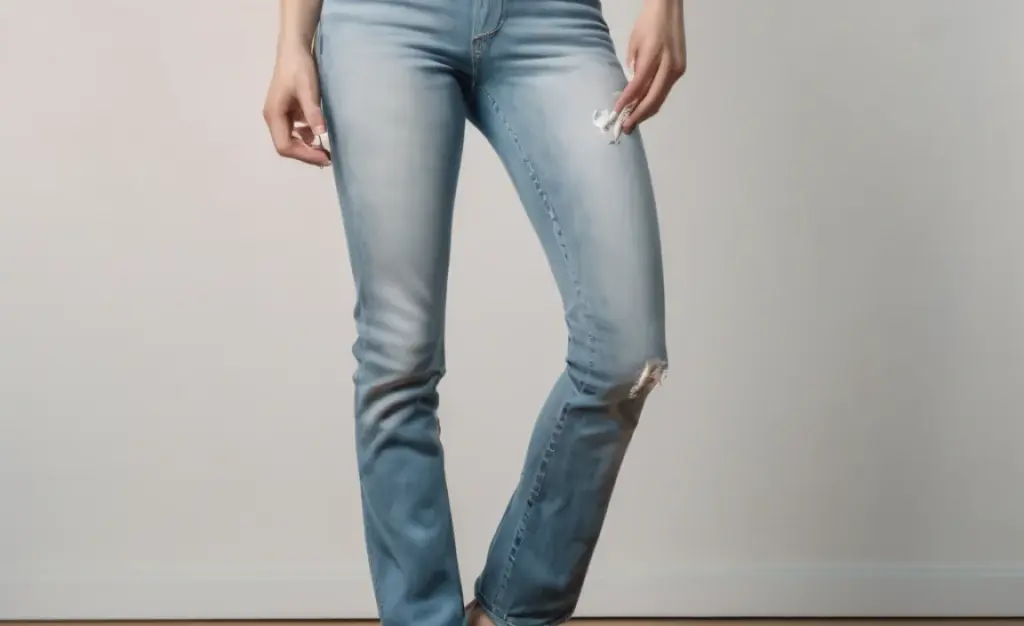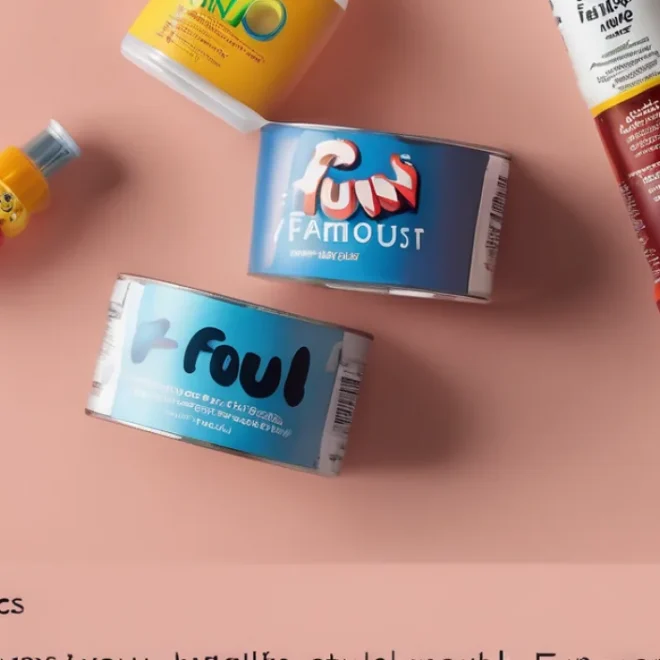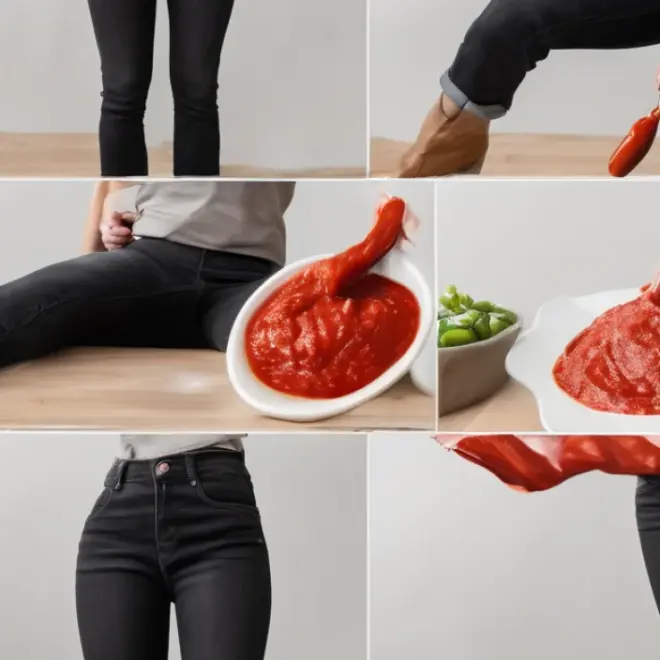Quick Summary: Accidentally got paint on your favorite light wash jeans? Don’t panic! This guide provides simple, effective methods to gently remove paint stains, restoring your denim’s fresh look. We’ll cover everything from common household items to specialized removers, ensuring a clear path to stain-free success.
Paint splatters on light wash jeans can feel like a fashion emergency. Whether it’s a DIY project gone awry, a creative art session, or an accidental bump against a freshly painted surface, that vibrant streak can quickly dim your denim’s appeal. But before you relegate those beloved jeans to the rag pile, know that removing paint from light wash denim is often achievable. With the right approach and a little patience, you can often rescue your jeans and keep them looking great. This guide will walk you through the most effective methods.
Understanding Paint and Denim: A Gentle Approach
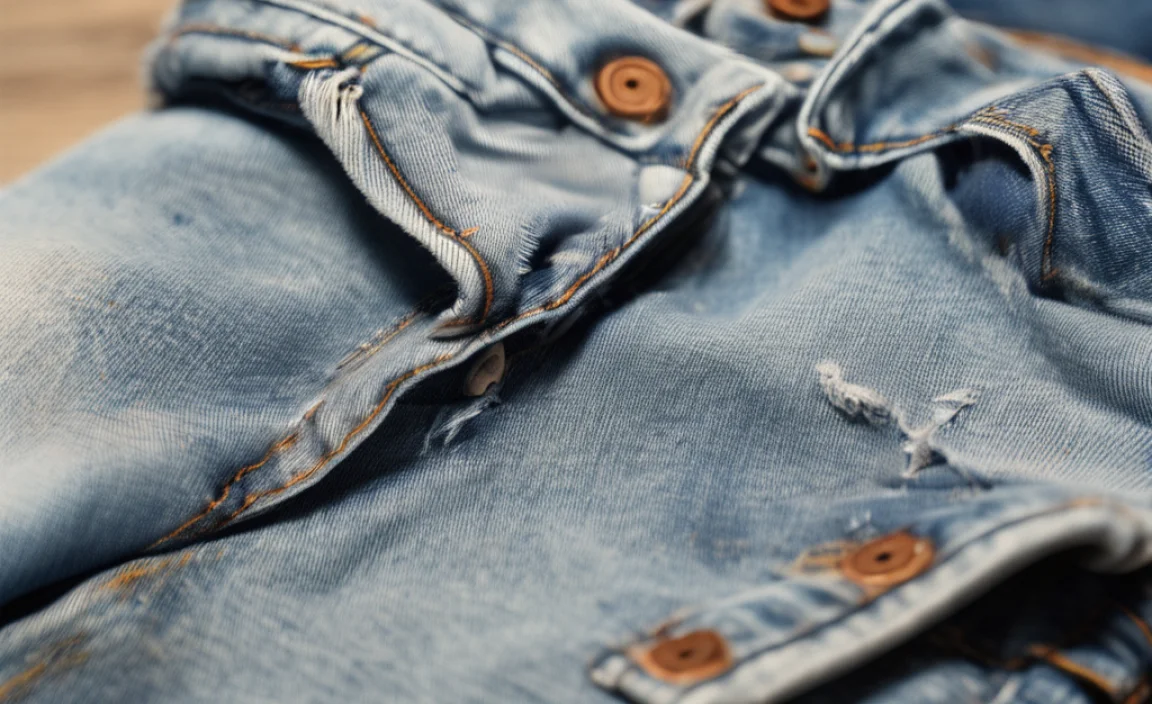
Light wash jeans are made from cotton denim, a sturdy fabric that can usually withstand a good cleaning. However, light washes are more susceptible to showing stains, including paint. The key to removing paint without damaging the denim or causing further discoloration is to act quickly and use the gentlest effective method first. Different types of paint require different removal strategies. Water-based paints (like latex or acrylic) are generally easier to remove than oil-based or permanent paints (like oil paints or some markers).
It’s also important to consider the age of the stain. Fresh paint is much easier to lift than paint that has dried and set into the fabric’s fibers. For this reason, immediate attention is your best ally. Always test any removal solution on an inconspicuous area of the jeans first, such as the inside of a hem or waistband, to ensure it doesn’t cause fading or damage to the fabric.
Essential Tools and Supplies
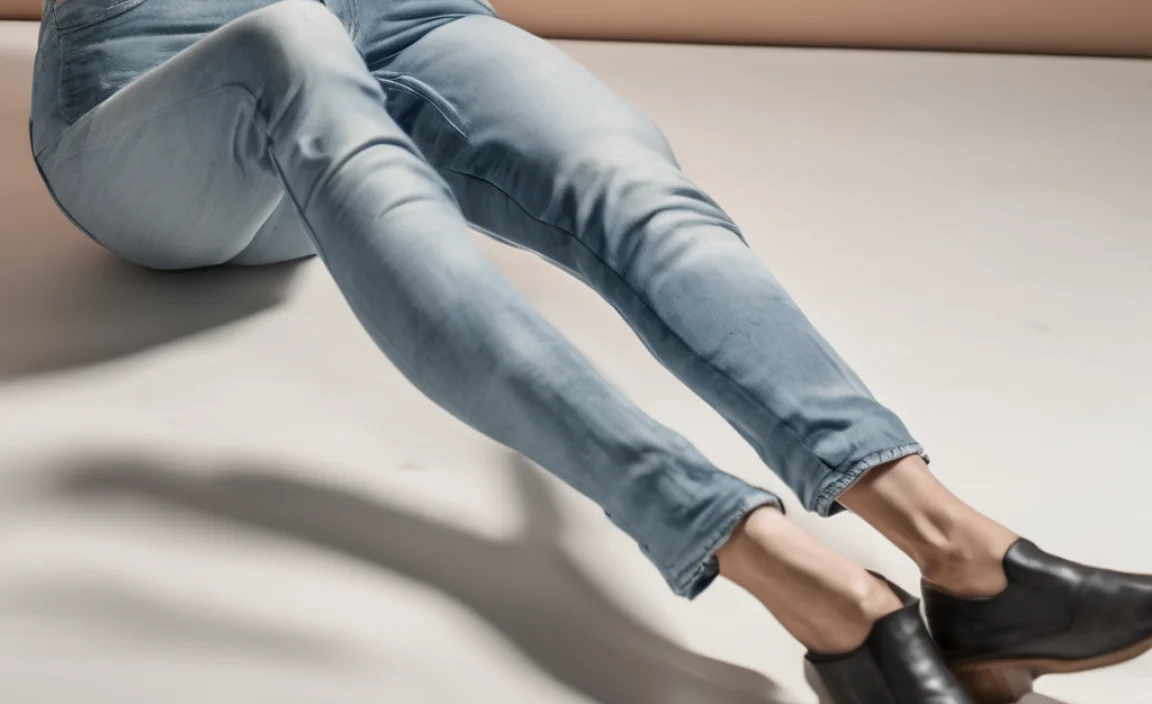
Before you begin, gather the necessary items. Having everything ready will make the process smoother and more efficient. Here’s a list of common supplies you might need:
- Clean microfiber cloths or paper towels
- Dull knife, spoon, or credit card (for scraping)
- Mild liquid dish soap
- Rubbing alcohol (isopropyl alcohol, 70% or higher)
- Nail polish remover (acetone-based)
- White vinegar
- Baking soda
- Commercial paint remover (check label for fabric safety)
- Cotton balls or swabs
- An old toothbrush
- Cold water
- A basin or sink
Method 1: For Fresh, Wet Paint (Water-Based)
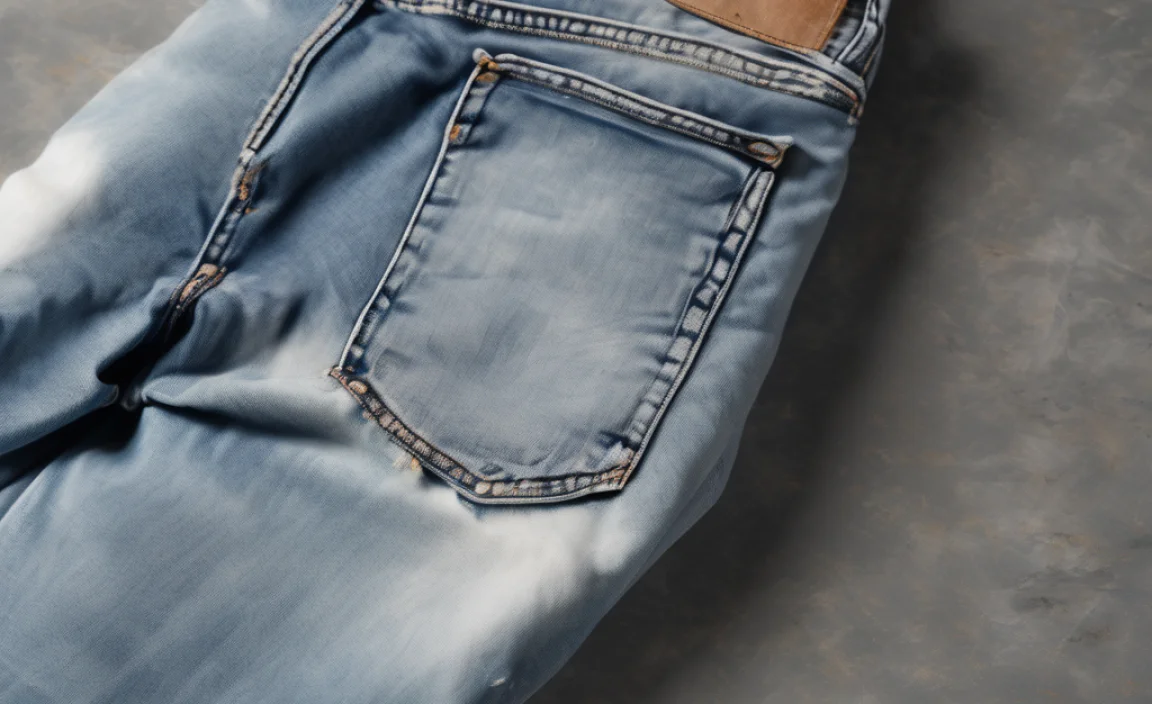
If the paint is still wet and is water-based (like latex or acrylic crafts paint), you have the best chance of immediate removal without harsh chemicals. Speed is crucial here.
- Blot, Don’t Rub: As soon as you notice the wet paint, grab a clean cloth or paper towel. Gently blot the wet paint to absorb as much of it as possible. Avoid rubbing, as this can push the paint deeper into the denim fibers.
- Rinse with Cold Water: Turn the jeans inside out and flush the stained area from the back with cold running water. This helps push the paint out of the fibers. Continue flushing until no more paint seems to be coming off.
- Gentle Soap Treatment: Apply a small amount of mild liquid dish soap directly to the remaining wet paint stain. Gently work it into the fabric with your fingers or a soft brush.
- Rinse Again: Rinse the area thoroughly with cold water.
- Launder as Usual: If the stain appears gone, wash the jeans in cold water with your regular detergent. Do NOT put them in the dryer if any trace of the stain remains. Heat will set the stain permanently. Air dry them and check.
Method 2: For Dried Water-Based Paint
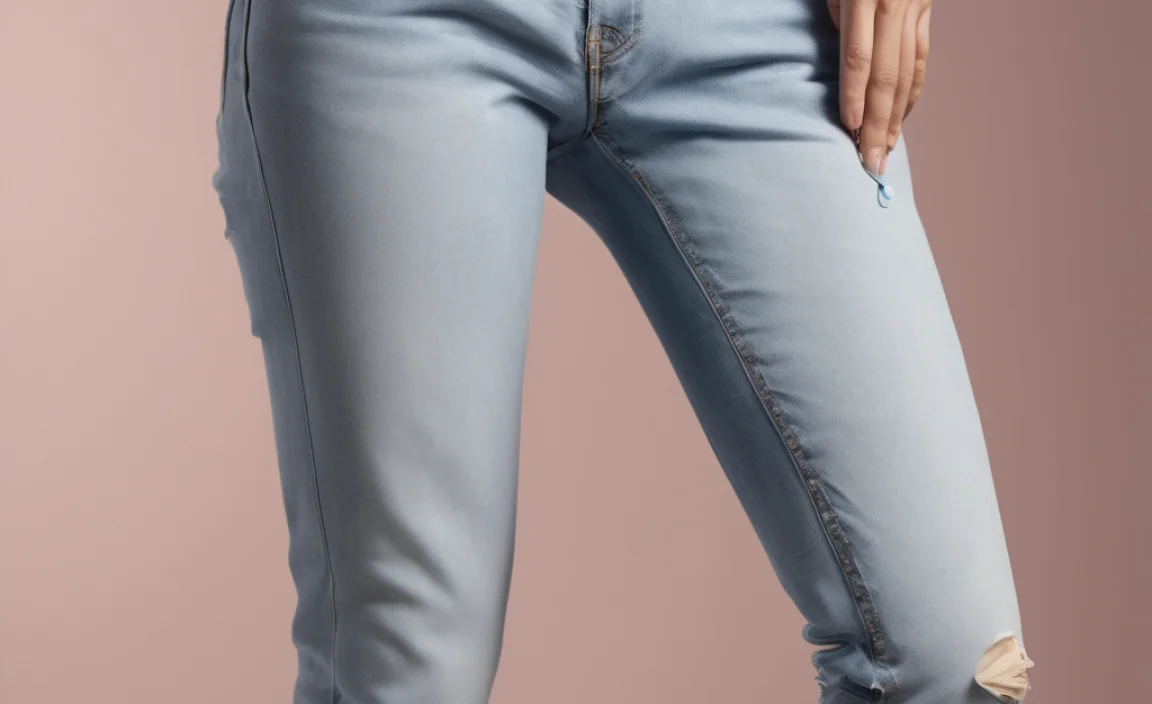
Once water-based paint has dried, it becomes more challenging to remove, but it’s still often possible. You may need to use a bit more elbow grease and a mild solvent.
Step 1: Scrape Away Excess Paint
Use a dull knife, the edge of a spoon, or a credit card to gently scrape off any dried, thick layers of paint. Be careful not to snag the denim fabric itself.
Step 2: Apply a Soaking Solution
Several solutions can help soften and lift dried water-based paint:
- Dish Soap and Water Paste: Mix a generous amount of mild liquid dish soap with enough water to form a thick paste. Apply this paste directly to the stained area, covering it completely. Let it sit for at least 15-30 minutes.
- White Vinegar: Soak the stained area in undiluted white vinegar for about 15 minutes. Vinegar is a mild acid that can help break down certain types of paint.
- Baking Soda Paste: Create a paste using baking soda and water. Apply it to the stain and let it sit for 30 minutes to an hour. Baking soda is a gentle abrasive and can help lift stains.
After applying your chosen solution and letting it soak, use an old toothbrush or your fingernails to gently work the paint loose. Rinse the area with cold water.
Step 3: Treat with Rubbing Alcohol
Rubbing alcohol (isopropyl alcohol) is an effective solvent for many water-based paints. It’s generally safe for most denim, but always test it on an hidden seam first.
- Saturate a clean cloth or cotton ball with rubbing alcohol.
- Gently dab the stained area, working from the outside of the stain inward. You should see the paint transferring to the cloth.
- Keep using fresh sections of the cloth or new cotton balls as they pick up paint.
- Once you’ve lifted as much paint as possible, rinse the area thoroughly with cold water.
Step 4: Launder
Wash the jeans as usual in cold water. Air dry them and check the stain’s progress. You might need to repeat the scraping, soaking, and alcohol treatment steps a few times for stubborn dried paint.
Method 3: For Oil-Based or Permanent Paints

Oil-based paints and permanent markers are tougher opponents. They require stronger solvents. Always proceed with caution and test in an inconspicuous area first.
Step 1: Scrape and Blot
Just like with dried water-based paint, start by gently scraping off any excess dried paint with a dull edge.
Step 2: Choose Your Solvent
For oil-based paints, you’ll likely need something stronger than alcohol. Options include:
- Mineral Spirits: These are effective for oil-based paints but can be harsh. Ensure good ventilation when using.
- Turpentine: Similar to mineral spirits, use with caution and good ventilation.
- Commercial Paint Remover: Products specifically designed for paint removal from fabric can be very effective. Read the product label carefully to ensure it’s safe for denim and follow the instructions precisely. Look for removers that mention suitability for fabric or upholstery. A reputable option for fabric stain removal is often found online or at hardware stores. For example, some specialized upholstery cleaners or spot removers might be formulated to tackle tough stains like paint.
For permanent marker ink (often oil-based), rubbing alcohol might still be your first line of defense. If that fails, nail polish remover with acetone can sometimes work, but it has a higher risk of affecting the dye of the jeans.
Step 3: Apply the Solvent
Work in a well-ventilated area, ideally outdoors or near an open window, wearing gloves if possible.
- Place a clean, white cloth or paper towel underneath the stained area of the jeans. This will absorb the loosened paint and prevent it from spreading.
- Dampen a clean cloth or cotton ball with your chosen solvent (mineral spirits, commercial remover, or acetone).
- Gently dab the paint stain. Do not rub vigorously. The goal is to dissolve the paint and transfer it to the cloth underneath.
- Continue dabbing, moving to a clean section of the cloth or using fresh cotton balls frequently.
- Allow the solvent to work for a few minutes, but don’t let it dry on the fabric.
Step 4: Rinse and Treat Residue
Once you’ve removed as much of the paint as possible, rinse the area thoroughly with cold water. You may need to follow up with a pre-treatment of liquid dish soap on any remaining oily residue from oil-based paint. Gently rub the soap into the spot and rinse again.
Step 5: Launder with Care
Wash the jeans in cold water with a good-quality detergent. Again, air dry them completely. Inspect the stain. If any trace remains, repeat the solvent treatment. Heat from a dryer will permanently set any remaining stain.
Table: Paint Type vs. Recommended Removal Method
Choosing the right method depends heavily on the type of paint. Here’s a quick reference:
| Paint Type | Fresh/Wet | Dried | Recommended Solvents/Treatments |
|---|---|---|---|
| Water-Based (Latex, Acrylic) | Cold water rinse, mild dish soap | Scrape, then dish soap paste OR white vinegar OR baking soda paste, followed by rubbing alcohol | Mild dish soap, white vinegar, baking soda, rubbing alcohol (isopropyl) |
| Oil-Based (Oil Paints) | Blot excess, detergent, then solvent if needed | Scrape, followed by mineral spirits, turpentine, or commercial paint remover | Mineral spirits, turpentine, commercial fabric paint remover |
| Permanent Marker Ink | N/A (usually dries quickly) | Rubbing alcohol (isopropyl), acetone-based nail polish remover | Rubbing alcohol, acetone-based nail polish remover |
Important Considerations for Light Wash Jeans
Light wash denim can be more sensitive to harsh chemicals and aggressive scrubbing. Here are some tips to keep in mind:
- Test First: Always test any cleaning solution or solvent on an inconspicuous area of the jeans (e.g., inside hem, seam allowance) before applying it to the main stain. Wait for it to dry to check for any discoloration or damage.
- Work from Back: For wet stains, flushing from the back of the fabric can push the stain out rather than further in.
- Patience is Key: Removing set-in paint can take multiple attempts. Don’t get discouraged if it doesn’t come out on the first try.
- Avoid Heat: Never put paint-stained jeans in a hot dryer. Heat will set the stain permanently. Air dry until you are certain the stain is gone.
- Professional Help: If the paint is extensive, very old, or of an unknown type, and you’re concerned about damaging your jeans, consider taking them to a professional dry cleaner experienced in stain removal. Many professional services can handle difficult fabric stains. You can consult resources like the EPA’s guidelines on paint disposal to understand paint composition better, though this is more for information and not direct cleaning advice.
DIY Stain Removal Recipes
Here are a couple of simple DIY mixtures that can help tackle paint stains:
Dish Soap and Baking Soda Paste
This is a great first step for dried water-based stains.
Ingredients:
- 1 tablespoon mild liquid dish soap
- 2 tablespoons baking soda
- Water (a few drops, as needed)
Instructions:
- Mix the dish soap and baking soda in a small bowl until a thick paste forms.
- Add a few drops of water if the paste is too dry.
- Apply the paste directly to the paint stain, covering it completely.
- Let it sit for at least 30 minutes (or up to a couple of hours for tougher stains).
- Gently scrub with an old toothbrush.
- Rinse thoroughly with cold water.
White Vinegar Soak for Dried Latex Paint
Vinegar can help break down dried latex paint.
Ingredients:
- White vinegar
- A basin or sink
Instructions:
- Find a sink or basin large enough to submerge the stained portion of the jeans.
- Pour enough white vinegar into the basin to completely cover the stained area.
- Submerge the stained part of the jeans in the vinegar.
- Let it soak for at least 15-30 minutes.
- Remove the jeans, gently rub the loosened paint with your fingers or an old toothbrush.
- Rinse the area thoroughly with cold water.
After using these pastes, you may still need to follow up with rubbing alcohol for stubborn dried paint, especially if it’s not fully removed.
Frequently Asked Questions (FAQ)
Q1: Will nail polish remover damage my light wash jeans?
Acetone-based nail polish remover can sometimes lift or alter the dye of denim, especially lighter washes. Always test it on a hidden area first. If it causes discoloration, do not use it on the visible stain.
Q2: How long should I let a cleaning solution sit on the stain?
For fresh wet paint, rinse immediately. For dried stains, initial soaking solutions like dish soap paste or vinegar can sit for 15-30 minutes, and up to a couple of hours for very stubborn spots. Solvents like rubbing alcohol should be applied and worked on without letting them dry on the fabric.
Q3: Can I use bleach to remove paint from my jeans?
It’s generally not recommended to use chlorine bleach on denim, especially light wash, as it can weaken the fibers and cause uneven, harsh fading or yellowing. If you must use a bleaching agent, consider a color-safe oxygen bleach, but always test first.
Q4: What if the paint is on a colored part of my jeans (e.g., embroidery)?
Be extra cautious. Solvents can affect colored threads. For painted embroidery, gently dabbing with a mild soap and water solution might be safest. For stubborn stains on these areas, professional cleaning is often the best bet.
Q5: My light wash jeans have a textured paint stain. Can I still remove it?
Textured paints (like puff paint) can be tricky. If the paint is still a bit pliable, try to gently peel or lift it. For dried textured paint, carefully scrape away as much as possible with a dull blade. Then, proceed with the appropriate solvent for the paint type, dabbing very gently to avoid disturbing the denim surrounding the texture.
Q6: How can I prevent getting paint on my jeans in the future?
Always wear an old shirt or an apron when working with paint. If you’re painting clothes, consider wearing dedicated painting clothes or protecting your good items with a durable drop cloth or plastic sheeting.
Conclusion: Restoring Your Denim
Dealing with paint stains on your light wash jeans doesn’t have to be a disaster. By understanding the type of paint and acting promptly with the right techniques, you can often successfully remove even stubborn marks. Remember to always start with the gentlest methods and test any cleaning agent on an inconspicuous area first. Patience, gentle scrubbing, and avoiding heat are your best allies. With these steps, you can confidently tackle paint mishaps and keep your favorite pair of light wash jeans looking as good as new.


